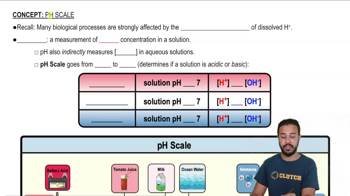Here are the essential concepts you must grasp in order to answer the question correctly.
Vasodilation
Vasodilation refers to the widening of blood vessels, which occurs when the smooth muscle in the vessel walls relaxes. This process is often triggered by various local factors, such as decreased oxygen levels or increased carbon dioxide, leading to enhanced blood flow to tissues that require more oxygen and nutrients.
Recommended video:
Local Metabolic Factors
Local metabolic factors, including oxygen (O₂) and carbon dioxide (CO₂) levels, play a crucial role in regulating blood flow. A decrease in O₂ or an increase in CO₂ typically signals the need for increased blood supply, prompting vasodilation in the arterioles supplying that area, thereby improving oxygen delivery and waste removal.
Recommended video:
Introduction to Metabolism
pH and Blood Flow Regulation
The pH level in tissues can influence blood flow; a decrease in pH (acidosis) often leads to vasodilation, while an increase in pH (alkalosis) can have the opposite effect. A local increase in pH may indicate a less urgent need for blood flow, potentially resulting in vasoconstriction rather than dilation in the arterioles.
Recommended video:
 Elaine N. Marieb, Katja Hoehn 7th Edition
Elaine N. Marieb, Katja Hoehn 7th Edition Ch. 19 The Cardiovascular System: Blood Vessels
Ch. 19 The Cardiovascular System: Blood Vessels Problem 5
Problem 5 Verified step by step guidance
Verified step by step guidance


